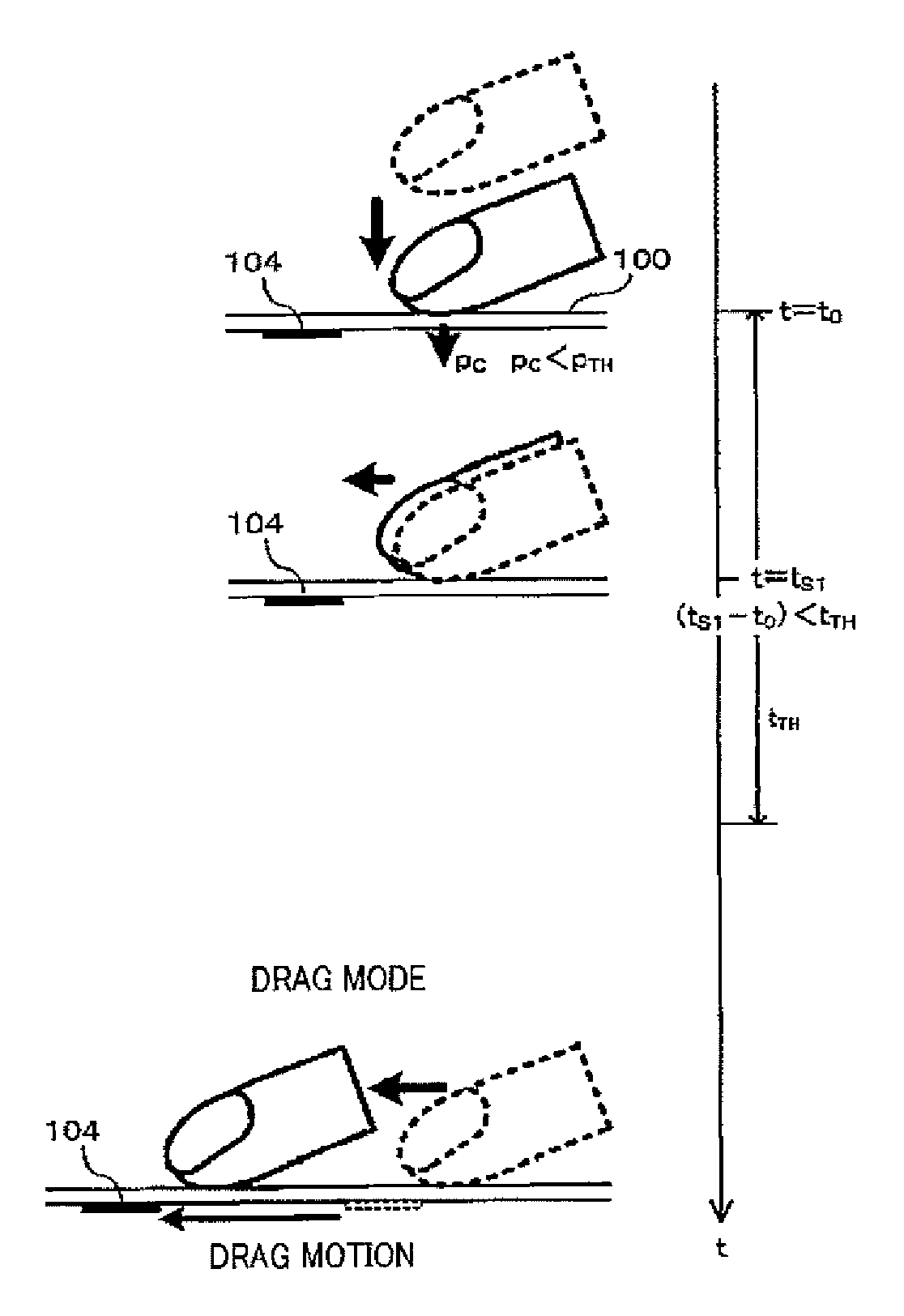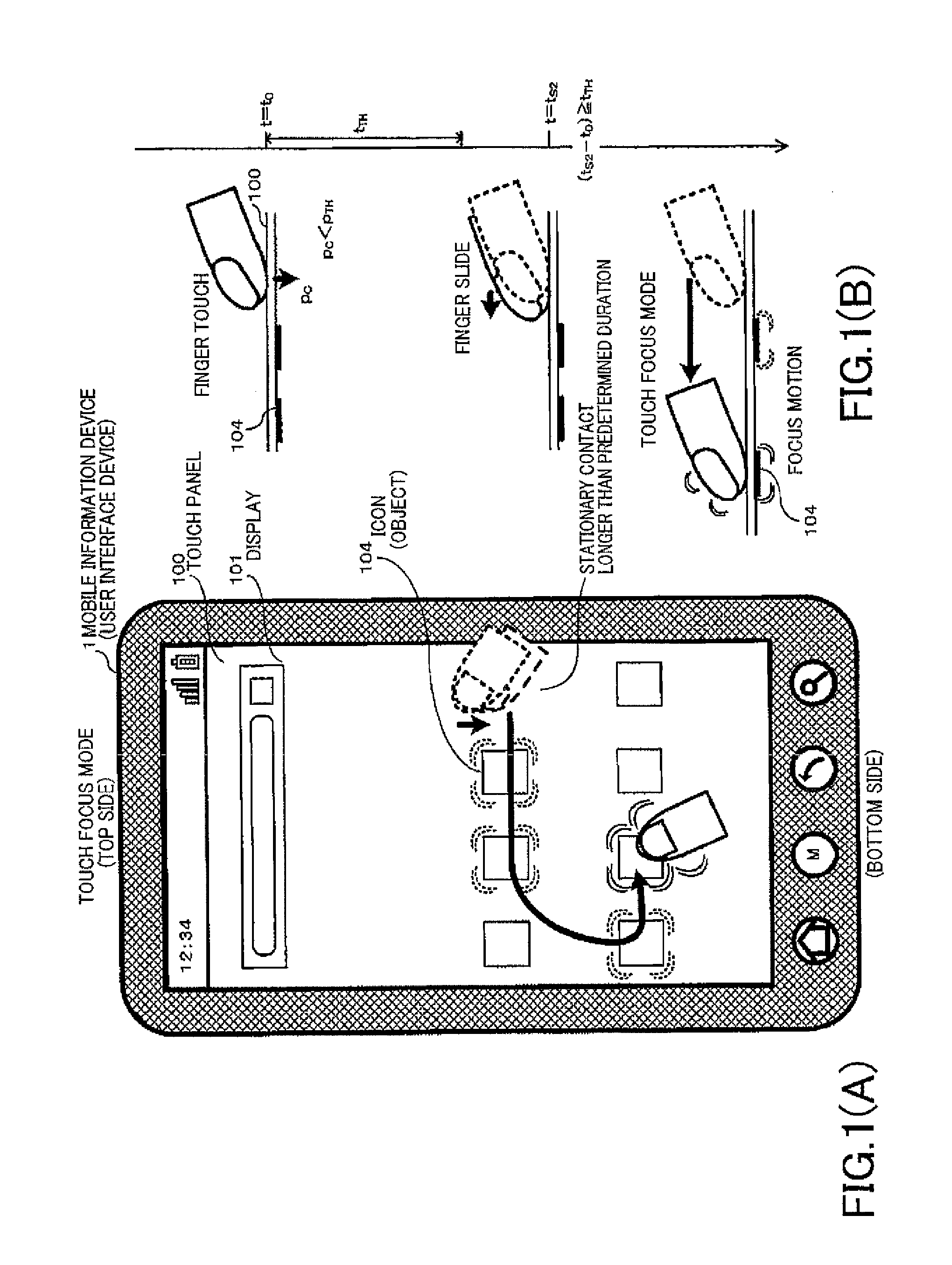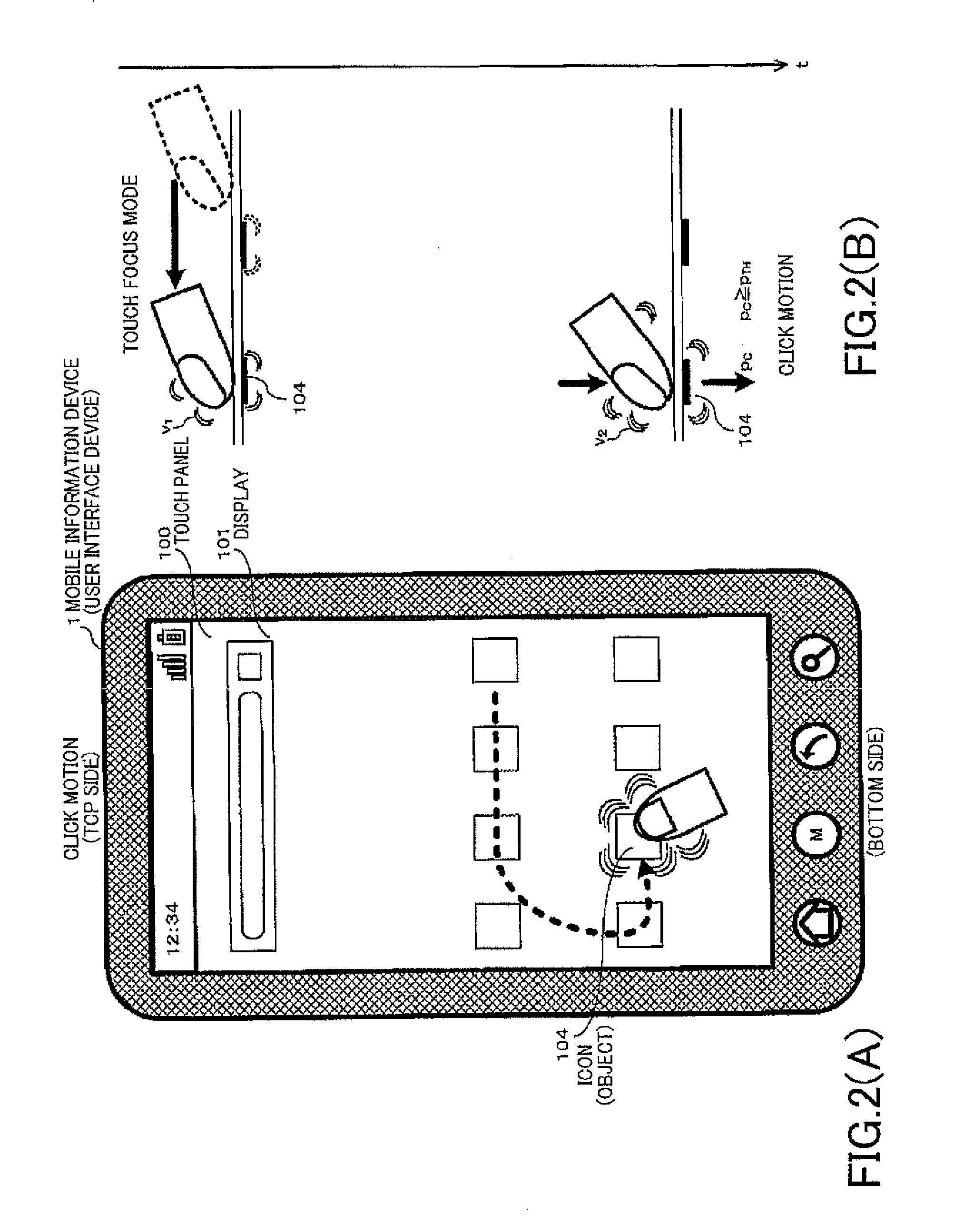User interface device enabling input motions by finger touch in different modes, and method and program for recognizing input motion
a user interface and finger touch technology, applied in the field of user interface devices, can solve the problems of poor interoperability of mobile information devices, user's intended correct input action can be misrecognized or misinterpreted, and the use of touch panels is more likely to induce incorrect input actions than us
- Summary
- Abstract
- Description
- Claims
- Application Information
AI Technical Summary
Benefits of technology
Problems solved by technology
Method used
Image
Examples
first embodiment
[0069]FIG. 1 illustrates a mobile information device 1 according to an illustrative first embodiment of the invention (e.g., a smart phone, a tablet computer, an e-book, a PDA (Personal Data Assistant), etc.), and, more specifically, a front view of the mobile information device 1 and a side view illustrating an example of a series of finger motions, both of which are for illustration of a touch focus mode.
[0070]FIG. 1(A) is a front view of the mobile information device 1. As illustrated in this front view, an image containing a plurality of icons (each of which forms an example of a graphical object) 104 is displayed on a display screen of a display 101. Each icon 104, which is to be manipulated by a user, can be selected by a user motion or action performed in predetermined patterns as described below, and, upon selection, each icon 104 invokes a function pre-assigned to each icon 104. In addition, a touch panel 100 is disposed on the display screen of the display 101, and the tou...
second embodiment
[0074]FIG. 1(B) is a schematic diagram illustrating finger motions for explanation of the conditions to be met for invoking the touch focus mode as described above. In an example depicted in this schematic diagram, initially, the user touches the touch panel 100 with the finger. This point in time is denoted by t0 (t=t0). It is noted that FIG. 1(B) has a mathematical expression, pcth, which will be referenced in the later description of the invention. Next, the user makes the finger shift from a current status where the finger is held motionless and in contact with the screen, to a status where the finger starts sliding up (in FIG. 1(B), left), without releasing from the screen. The starting time of this finger-slide motion is denoted by ts2 (t=ts2). In this scenario, it turns out that the finger contact point continuously stays still for a duration (ts2−t0) (i.e., a stationary-contact duration or a finger stay duration).
[0075]In response to an event occurring where the duration (ts...
PUM
 Login to View More
Login to View More Abstract
Description
Claims
Application Information
 Login to View More
Login to View More - R&D
- Intellectual Property
- Life Sciences
- Materials
- Tech Scout
- Unparalleled Data Quality
- Higher Quality Content
- 60% Fewer Hallucinations
Browse by: Latest US Patents, China's latest patents, Technical Efficacy Thesaurus, Application Domain, Technology Topic, Popular Technical Reports.
© 2025 PatSnap. All rights reserved.Legal|Privacy policy|Modern Slavery Act Transparency Statement|Sitemap|About US| Contact US: help@patsnap.com



